How to paint stripes on a wall - the expert guide to creating show stopping decor
Expert tips for how to paint stripes on a wall mean you can color within the lines while creating incredibly on-trend decor schemes
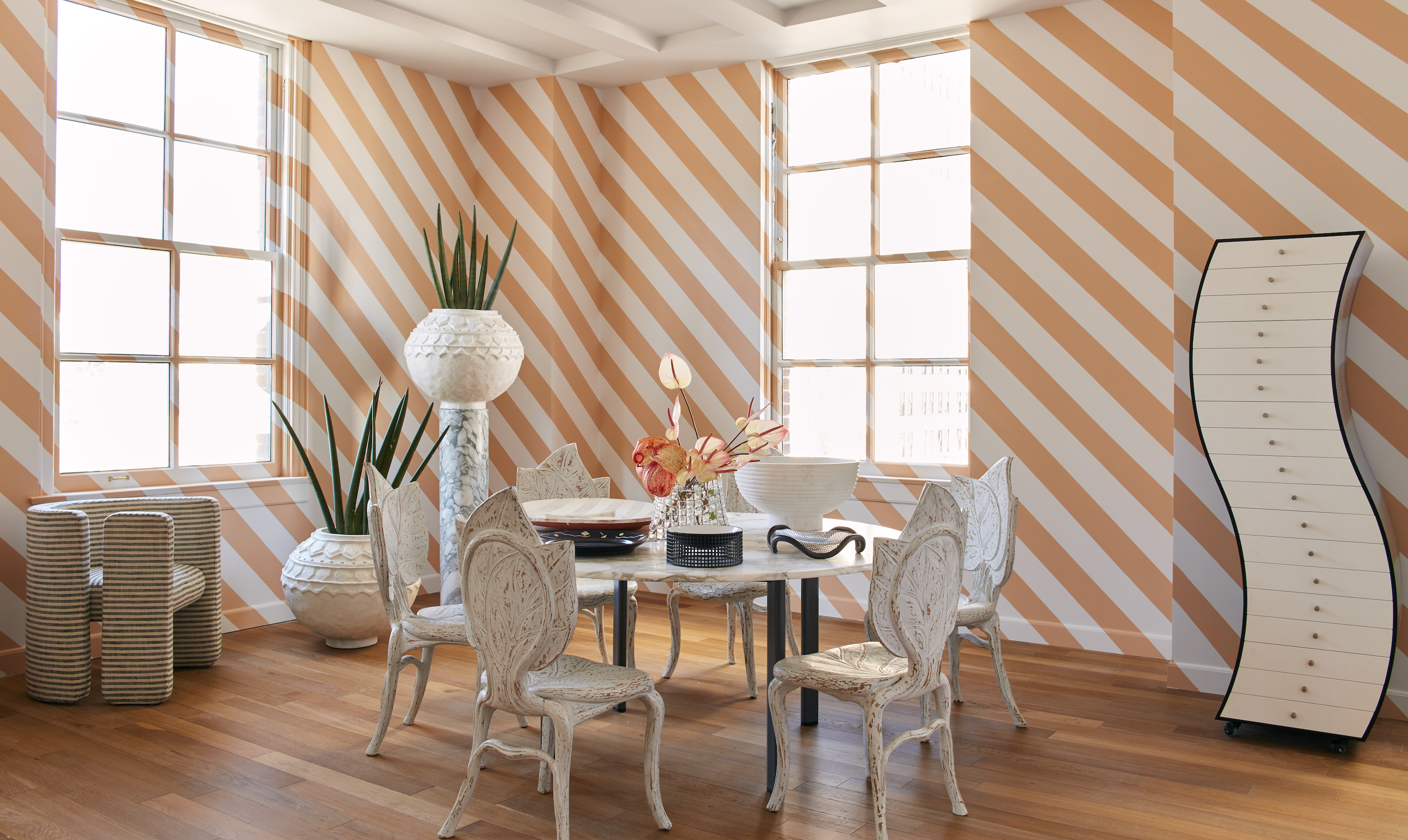
Once you know how to paint stripes onto a wall, you can impact your space in myriad ways. Stripes offer stand out style yet they can also be used to highlight architectural details in a room too.
From wide vertical candy stripes across an entire room to a single subtle stripe hovering above a skirting board or around architraves, there are options to go bold and beautiful or simple and stylish in your paint ideas and room designs.
'Stripes are achingly in right now, but there is also genuine longevity in this look and ways it can change the dynamics in a room,' says Patrick O'Donnell, paint expert at Farrow & Ball. 'Be as delicate or as bold as you dare.'
There are just a few rules to getting them right, to keep stripes looking as neat and pin-sharp as you'd want.
How to paint stripes on a wall
If you're confident in how to paint a room, painting stripes onto an accent wall could be within your DIY capabilities. It depends how complex your design is and how handy you are with a paint brush.
'Painting stripes, much like any colour blocking looks best when carefully and cleanly finished with sharp neat lines, which are easy to achieve with a little care and attention,' says Ruth Mottershead, creative director at Little Greene.
'If you want to paint vertical stripes there are a few steps you will need to follow,' says Marianne Shillingford, creative director, Dulux.
The Livingetc newsletters are your inside source for what’s shaping interiors now - and what’s next. Discover trend forecasts, smart style ideas, and curated shopping inspiration that brings design to life. Subscribe today and stay ahead of the curve.
'Apply the background color first and allow it to dry. Then use a tape measure and coloured chalk to mark the width of the stripes. Follow this with a chalked plumb line to snap the straight lines.
'Then mask off every other stripe with decorator’s low tack masking tape. Fill in the contrasting colour with a roller, brush or combination of the two depending on the size of the stripes. Allow it to dry and carefully remove the masking tape.'
1. Go vertical to give a room the illusion of more height
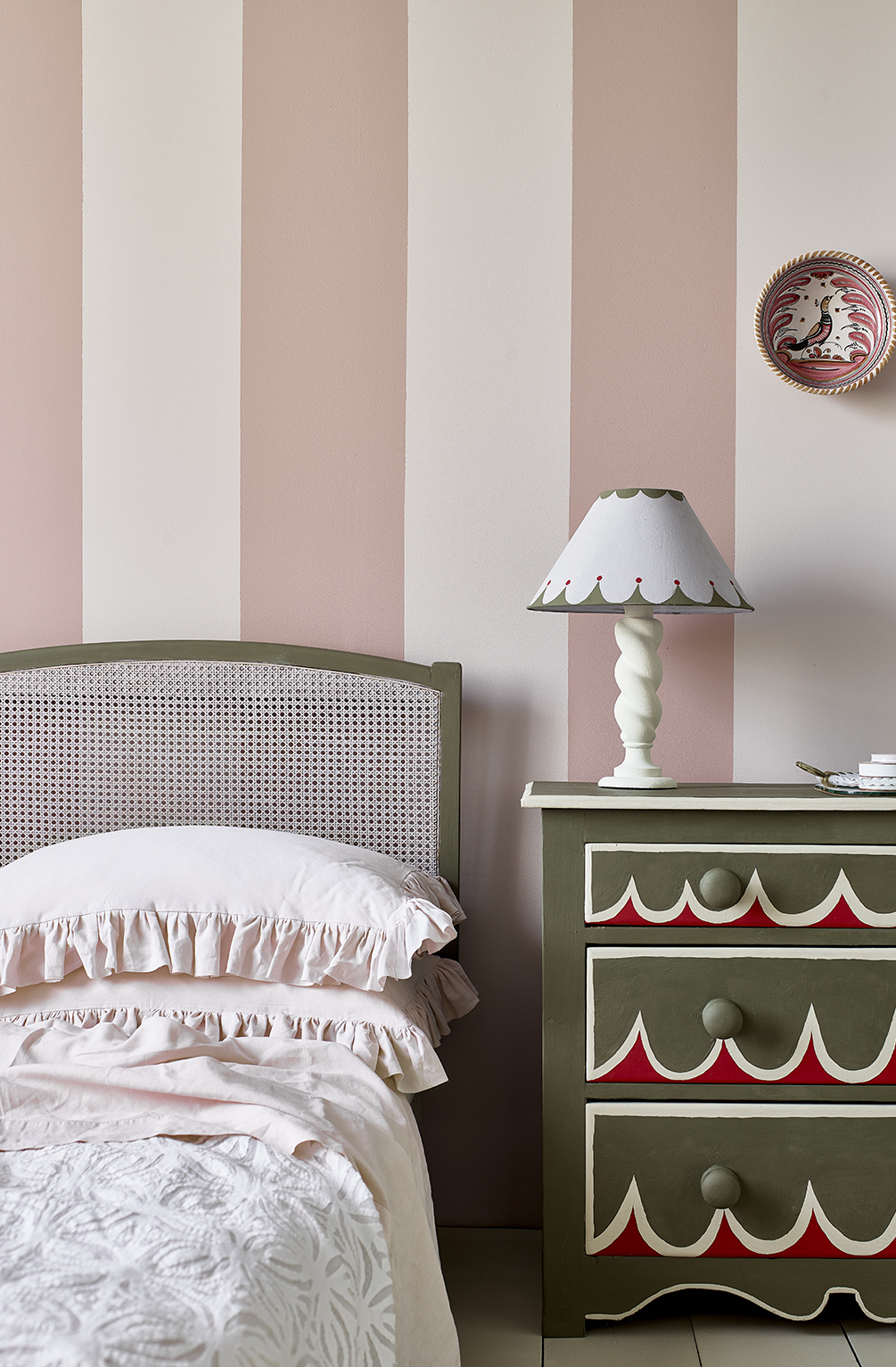
Much like with fashion, where the general ethos is that vertical stripes make the wearer look taller, and horizontal will make someone (or something) appear wider. So it goes with rooms.
'If you want to add height to a room, paint vertical stripes. If length or width, add horizontal stripes,' says Paint and Color Expert, Annie Sloan.
As with how to paint a room even without stripes, masking tape is key here. 'Use masking or painters’ tape for crisp lines,' Annie says. 'Allow the paint to dry fully between switching colours and paint the lighter shades first.'
2. Add interest to plain shelving
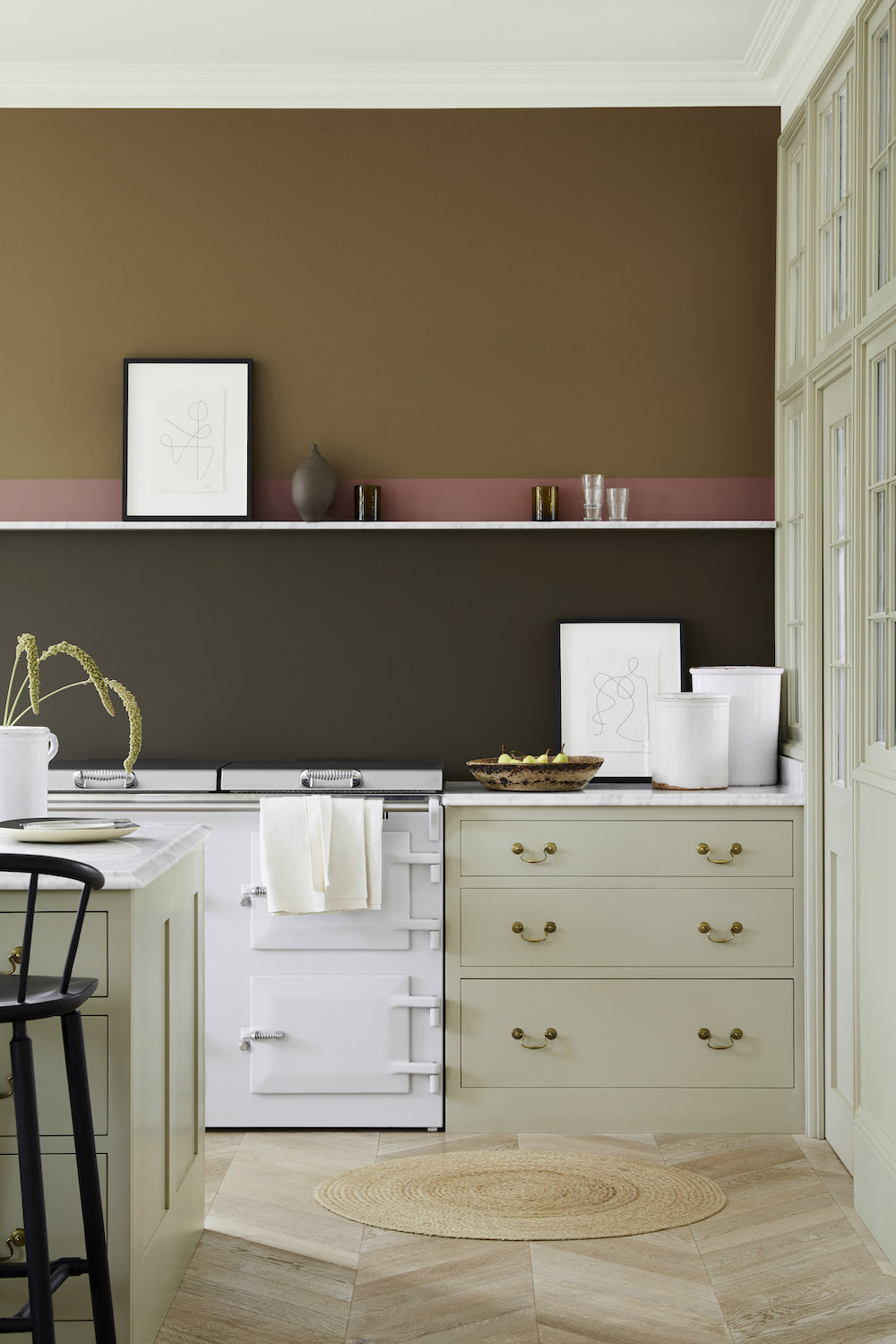
Stripes can also be added to add interest to practical elements in a room, such as shelving. 'Highlight stripes are a wonderful way to add personality, color and design detail to space,' says Ruth Mottershead, creative director at Little Greene.
'A stripe of earthy red used to divide a wall will add a sumptuous accent to an elegant "Book Room Green" kitchen. Firstly paint the area with your base color and allow it to dry completely before marking out your stripes using a spirit level and pencil, and applying a high quality masking tape,' Ruth says.
'Place the tape just on the outside of your pencil marks, so they will be covered by your paint. Remove the masking tape before your paint has dried completely to avoid removing any paint from the wall. Simply repeat this step with new tape before applying the second coat of paint.'
Good advice for how to paint a wall even if you're not adding stripes.
3. Highlight architectural details
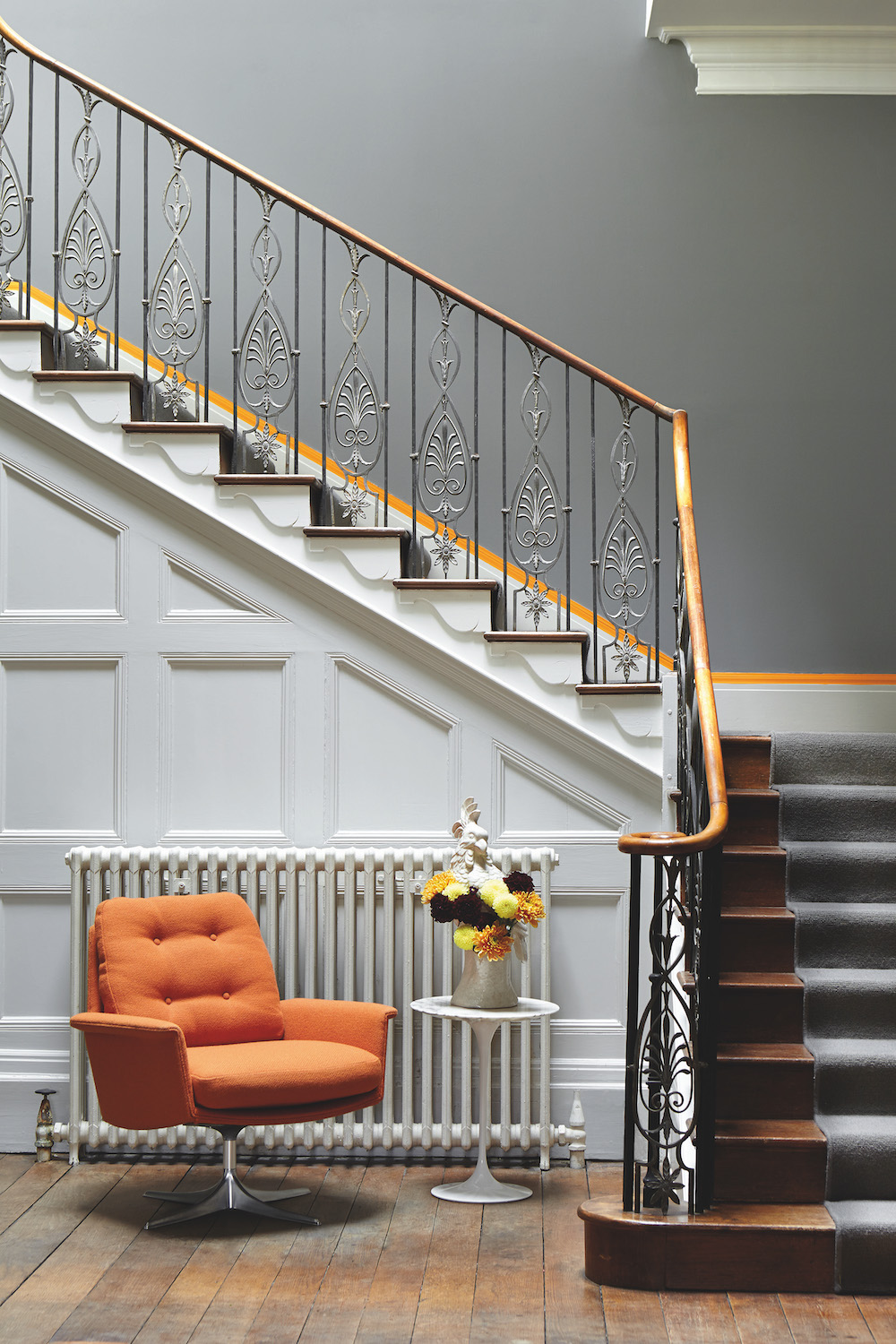
A stripe of color is a modern way to highlight architectural detailing such as smart skirting or attractive architraves - not all striped walls have to be floor to ceiling.
'For a bold and playful scheme opt for contrasting colours in stripes, taken across door frames, skirting or architectural features,' says Ruth Mottershead at Little Greene.
'The more contrasting the color combination, the more it will draw the eye and deliver impact. A vibrant orange will work fantastically combined with a cool modern grey.'
4. Create stripes with panelled batons

If you don't have a steady hand, or the patience to carefully paint between stripes marked out on your walls, there's an easier way to achieve the look. Paint your wall then coat timber batons in a contrasting color. Once dry you can stick them onto the painted wall.
The wall will still need to be marked out and the batons measured and spaced apart at regular intervals. However, you can paint the batons on newspaper or cardboard on the floor, so there's no need to worry about going over the edges or smudging the lines when you remove the tape. It's an easier way to achieve this stylish effect.
5. Take stripes from the wall onto the ceiling
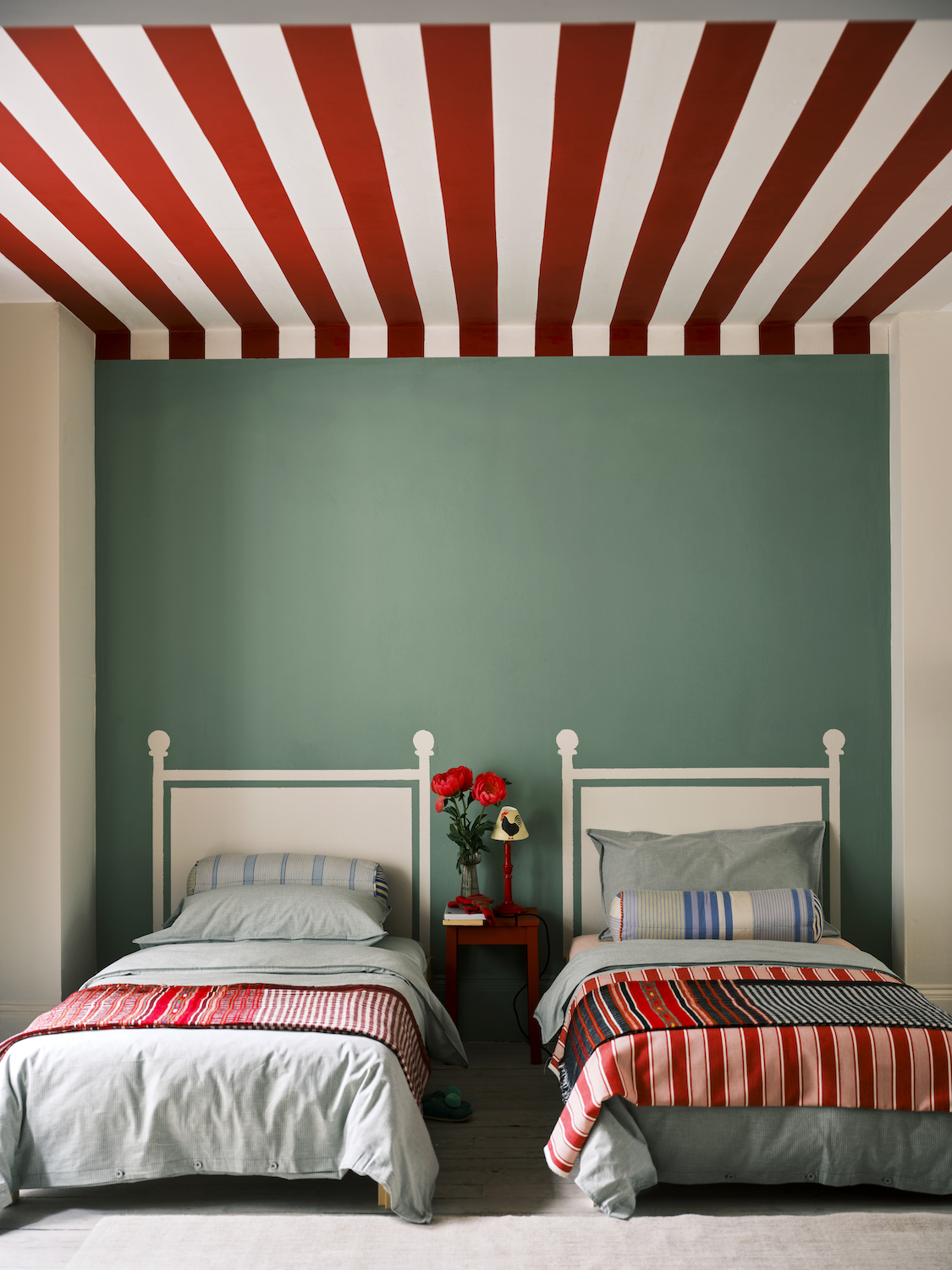
For a slightly different and beautifully dramatic effect, start with stripes at the top of the wall and take them up over the ceiling. Measure, mark out the lines and tape them in the same way you would for the walls. (This handy guide for how to paint a ceiling is essential here).
'Instead of producing a Big Top effect, which may feel like a trigonometry rabbit hole only for the brave and super confident, creating parallel lines is an easy substitute and can create an equally striking effect,' says Patrick O'Donnell at Farrow & Ball. 'It is the perfect motif for a children's bedroom to create a visual treat.'
Jacky Parker is a freelance lifestyle journalist and writer, producing a wide range of features for magazines and digital platforms. She has written for Livingetc and its sister titles, Homes & Gardens and Country Homes & Interiors for more than 15 years, both as a freelance contributor and as Acting Digital Editor and Acting Style Content Editor, regularly reporting on the latest interiors, gardens and wellness inspiration, speaking to experts in their respective fields, and discovering the best tips.
Jacky has also written for other publications, including Sunday Times Style, The Telegraph, Architectural Digest, House Beautiful, ELLE Decoration, Red, Grand Designs and more.